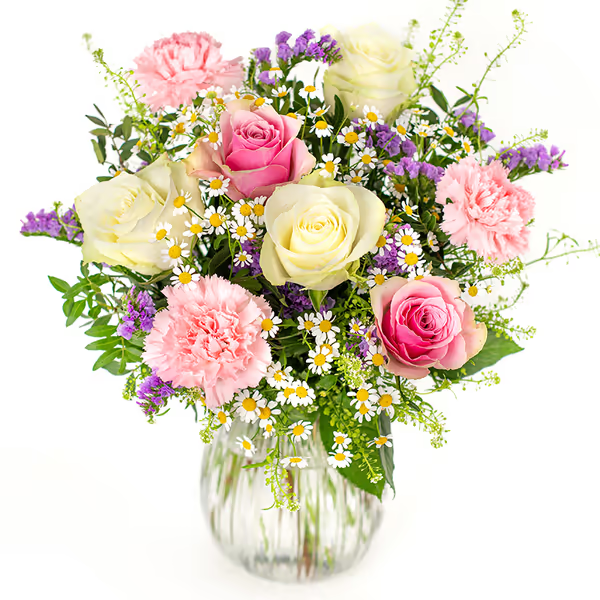Flowers with Negative Meanings: What Not to Send (and Why)
You pick yellow carnations for their sunny colour, but in Victorian flower language, you've just told someone they've disappointed you — not ideal for an apology bouquet.
Coded flower messages made sense when Victorians couldn't speak freely about feelings. We've inherited their meanings despite having no such restrictions on saying exactly what we mean.
Join us below for flowers that might say something you don't intend.
Yellow carnations signal rejection
Yellow carnations meant "you have disappointed me" in Victorian flower language, making them risky for apologies. Spain and France still associate them with rejection, while Latin American traditions link yellow flowers to death.
Mixed arrangements include various flowers, softening any single meaning. A bouquet of only yellow carnations sent to someone versed in flower language creates an awkward situation.
Red carnations say "my heart aches for you" more clearly. Apology flowers featuring white roses or pink tulips avoid the rejection message entirely.
Black roses aren't subtle
Natural roses don't come in black — florists dye white ones or breed extremely dark red varieties. You're already sending something artificial, which adds to their meaning of endings and death.
Deep red roses say passion without the funeral vibes. Sympathy flowers should stick to whites and pastels rather than anything resembling black.
Orange lilies once meant hatred
Some Europeans thought orange lilies represented hatred and pride, probably because the colour stood out. Japan sees them as wealth symbols, proving flower meanings aren't universal truths.
Lilies already require caution — their pollen stains everything and poisons cats. Adding potential hatred symbolism makes the orange ones doubly problematic for casual gifting.
White lilies work for sympathy, pink for admiration. Birthday flowers benefit from cheerful mixed colours rather than single-variety statements.
Petunias supposedly express anger
Victorian guides claim petunias mean "your presence angers me," which seems harsh for such cheerful garden flowers. South American indigenous groups used them in protection rituals before Europeans assigned them social meanings.
Pansies mean "thinking of you" if you need garden flowers with safer symbolism. Annual bedding plants rarely carry heavy emotional weight in practice.
Butterfly weed means "leave me"
Butterfly weed traditionally means 'leave me alone' in American wildflower symbolism. Monarch caterpillars depend on it as their sole food source during migration seasons.
The antisocial meaning seems at odds with a plant that sustains butterfly migrations. Native Americans used it medicinally, focusing on its practical properties.
Cyclamen suggests goodbye
Cyclamen flowers hang their heads like they're already leaving the party. Mediterranean folklore reads this as resignation — farewell flowers that bloom just as everything else gives up for winter. Come summer, the whole plant ghosts you, dying back to nothing.
The Greeks have a point. Who wants a houseplant that practices its death every year? Beautiful through February, gone by June, it's the botanical equivalent of a winter fling.
Orchids stick around. Those grocery store phalaenopsis bloom for months without the existential drama. Amaryllis makes a statement, too, but at least it's about determination rather than departure. Both manage winter colour without scheduling their funeral.
Marigolds divide opinions
Marigolds can't agree on their reputation. Mexican families scatter them on Day of the Dead altars, bright orange paths for returning souls — death as reunion, not ending.
Indian weddings drape them everywhere; they're practically confetti with roots. Victorian England, meanwhile, decided these same cheerful flowers reeked of jealousy and cruelty.
One flower, four stories. Your Mexican neighbour sees ancestral bridges where your British grandmother sees spite. The marigolds don't care and blaze orange regardless.
Modern flower giving
Victorian flower meanings emerged from necessity. When you couldn't speak your mind at a formal dinner, a strategically placed nosegay had to do the talking.
Florists today chase beauty, not bibliography. They'll pair orange lilies with white roses because the contrast pops, never mind that you've technically just declared both hatred and pure intentions. Most bouquets would scandalise a Victorian if anyone bothered translating.
Safe choices exist
Safe choices exist
Roses spell it out in colour, with red for love, pink for thanks, and white for sympathy. No ambiguity, no regional variations. Sunflowers broadcast cheer wherever they're planted. Tulips mean spring and nothing more complicated.
Gerbera daisies bloomed into popularity after the Victorian meaning-assignment era ended. Sweet peas, the ranunculus, and lisianthus likewise escaped the symbolism treatment. They're just flowers being flowers.
Bundle different types together, such as yellow chrysanthemums, pink alstroemeria, and iris, and you're safe from accidental messages.
Practical flower selection
Ask florists about cultural considerations for your recipient rather than memorising Victorian flower meanings. Regional preferences matter more than historical symbolism for contemporary gift-giving.
Consider the occasion first. Funeral flowers need different treatment from birthday bouquets, regardless of Victorian opinions. Seasonal availability often determines options more than symbolic concerns anyway.
Conclusion
Some flowers carry centuries of negative symbolism — yellow carnations for disappointment, orange lilies for hatred, and petunias for anger. Victorian flower language had meanings to help people communicate in restrictive times.
These meanings persist in some contexts. Chrysanthemums remain funeral flowers in France, marigolds guide spirits in Mexico, and black roses suggest endings everywhere.
Know your recipient and occasion. Mixed bouquets, such as birthday flowers and sympathy arrangements, are safe choices.
Have you ever received a flower with an unexpected meaning?


